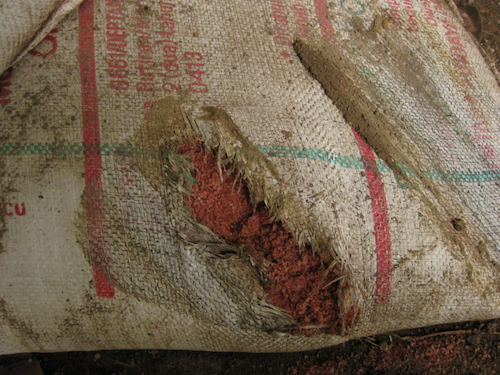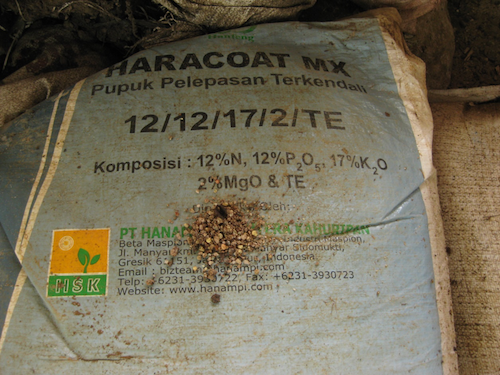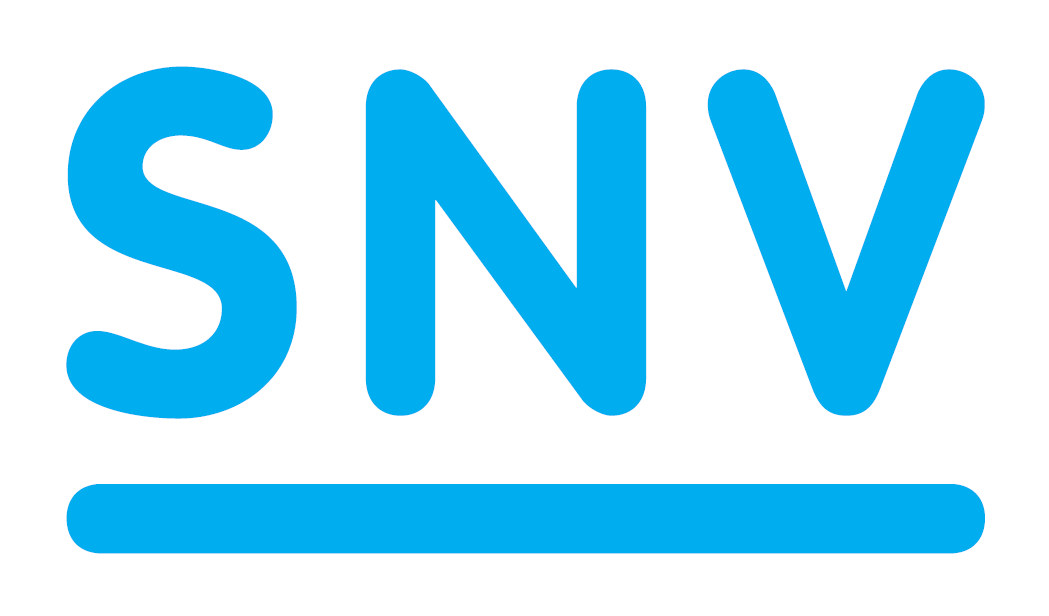Download: Module 4: Fertiliser Application
| Warning! Fake fertilisers are a common problem in many countries. Be careful when buying fertilisers, especially from someone you don’t know.
|
When buying fertilisers, stick to the following guidelines:
- Buy from a trusted person;
- Do not buy fertilisers that are extremely cheap or from an unclear origin (these are likely to be fake);
- Check if the fertilisers are in good condition (i.e. dry, clean, correct colour);
- Check if the bags look good and have been closed correctly with a straight stitch and the same colour thread for all bags;
- Check if the soluble fertilisers (i.e. all fertilisers other than rock phosphate and dolomite) actually dissolve when a handful is thrown into a bucket of water. If the grains sink to the bottom and don’t dissolve after stirring the fertiliser is probably fake;
- If KCl (MOP) or urea is dissolved when put in water, the water temperature should go down, so the water should get colder;
- Check the smell of KCI—good quality KCl doesn’t have a particular smell.
Advantages and disadvantages of different types of fertilisers
The following tables provide an overview of the key advantages and disadvantages of different types of fertilisers on the market today 1, 2.
Nitrogen fertiliser
| Type
|
% N
|
Advantages
|
Disadvantages
|
| Urea
|
46
|
Cheap, easy to store
|
Loss through leaching and volatilisation, acidifying
|
| Ammonium nitrate (AN)
|
34
|
Little volatilisation, non-acidifying
|
Expensive, difficult to store
|
| Sulphate of ammonium (SA)
|
20.6
|
Easy to store
|
Expensive, very acidifying, induces Mg deficiency
|
Phosphate fertiliser
| Type
|
% P2O5
|
Advantages
|
Disadvantages
|
| Triple Super Phosphate (TSP)
|
45—47
|
Very soluble, effective, also contains 20% CaO
|
Expensive
|
| Diammonium Phosphate (DAP)
|
46
|
Very soluble, also contains 18% N and 11% S
|
|
| Rock Phosphate (RP)
|
30—34
|
Inexpensive, effective, also contains 45% CaO
|
Bulky, slower response, high transport costs
|
Potassium fertiliser

Figure 17: KCl, also known as potassium chloride or Muriate of Potash (MOP)
| Type
|
% K2O
|
Advantages
|
Disadvantages
|
| Muriate of Potash (MOP, KCl)
|
60
|
Relatively cheap, effective, also contains 35% Cl
|
|
| Bunch ash
|
20—40
|
Cheap, increased soil pH, effective
|
Cannot be stored for long, difficult to obtain for smallholders
|
Compound fertiliser (NPK)

Figure 18: NPK fertiliser with magnesium and trace elements (12-12-17-2 + TE)
| Type
|
% N, P2O5, K2O, MgO
|
Advantages
|
Disadvantages
|
12-12-17-2
+ micronutrients
|
12-12-17-2
+ micronutrients
|
Easy to apply and easy to obtain, containing all required nutrients
|
Expensive, less suitable for mature plantations
|
Note: Compound (NPK) fertilisers are usually most suitable for application in nurseries and immature plantations (less than 3 years after planting). In mature plantations, the balance of N, P and K in the compound fertilisers is often not correct, and in most cases it is cheaper to apply single nutrient fertilisers unless the labour costs for application are high.
Magnesium fertiliser
| Type
|
% MgO
|
Advantages
|
Disadvantages
|
| Kieserite
|
26
|
More soluble, also contains 23% S
|
Expensive
|
| Langbeinite
|
18
|
More soluble, also contains 22% K2O and 22% S
|
|
| Dolomite
|
10—18
|
Reduces soil acidity, also contains ~ 30% CaO
|
Insoluble, only useful on very acid soils 1, 2
|
Boron fertiliser
| Type
|
% B
|
Advantages
|
Disadvantages
|
| Borax
|
11.3
|
Effective
|
Expensive
|
Copper and zinc fertiliser 3
| Type
|
% Cu / Zn
|
Advantages
|
Disadvantages
|
| Copper sulfate
|
25
|
Also contains 13% S
|
Expensive, difficult to get
|
| Zinc sulfate (ZnSO4.H2O)
|
36
|
Also contains S
|
Relatively expensive, difficult to get
|
| Zinc sulfate (ZnSO4.7H2O)
|
22
|
Also contains S
|
Relatively expensive, difficult to get
|
References
- ↑ I.R. Rankine, T.H. Fairhurst, Field Handbook: Oil Palm Series, Volume 3 – Mature, second ed., Potash & Phosphate Institute (PPI), Singapore, 1999.
- ↑ FAO, FAOSTAT Metadata/classifications/resources, in, Food and Agriculture Organization of the United Nations, Rome, 2013.
- ↑ International Zinc Association, Crops, International Zinc Association, Brussels, www.zinc.org/crops, Accessed November 20 2014.
Acknowledgements
The material from Types of fertilisers is sourced from Smallholder Oil Palm Handbook and put together by Lotte Suzanne Woittiez (Wageningen Universit) and Haryono Sadikin, Sri Turhina, Hidayat Dani, Tri Purba Dukan, and Hans Smit (SNV) in August 2016. See Module 4: Fertiliser Application for more information.





